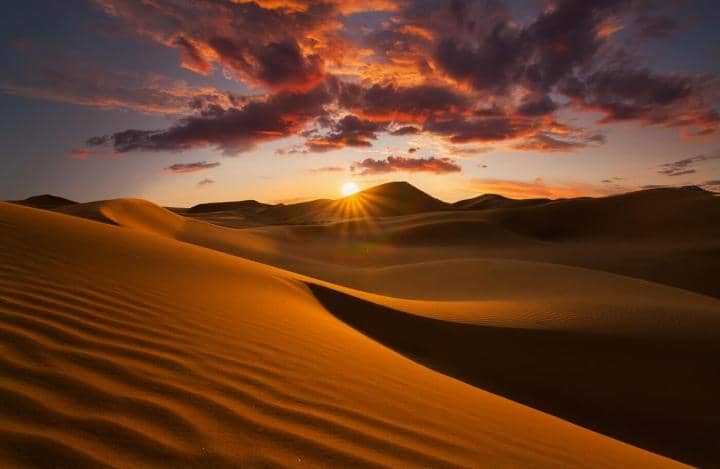The Sahara Desert, a vast expanse of sand, rock, and salt, is the largest hot desert in the world, covering an area larger than the continental United States.
Stretching across North Africa, this arid landscape experiences some of the most extreme temperatures on the planet, making it a true testament to the resilience of life in the face of adversity.
One of the most striking features of the Sahara is its sheer heat. With an average annual temperature of around 30°C, the desert is a furnace that can reach temperatures well over 50°C during the day.
The highest recorded temperature in the Sahara was a staggering 58°C, measured in Al Aziziyah, Libya, in 1922. This extreme heat is a result of the desert’s location near the equator and its lack of vegetation, which would otherwise provide some cooling through evapotranspiration.
Despite the scorching daytime temperatures, the Sahara experiences a dramatic temperature drop at night. Due to the desert’s low humidity, heat is quickly lost to the atmosphere, causing nighttime temperatures to plummet to as low as -6°C.
This extreme temperature fluctuation is a testament to the desert’s harsh and unforgiving nature.
Rainfall in the Sahara is scarce, with half of the desert receiving less than 1 inch of precipitation annually. This lack of water is a major factor in the desert’s arid climate, which is characterized by sparse vegetation and a lack of surface water.
The limited rainfall is a result of the desert’s location in the subtropical high-pressure zone, where air masses descend and warm, preventing cloud formation and precipitation.
The Sahara’s diverse landscape is a testament to the power of erosion and the ever-changing nature of the Earth’s surface.
The desert features rocky plateaus, salt flats, and towering sand dunes, some reaching heights of 450 meters. These dunes, known as ergs, are formed by the wind and can stretch for hundreds of kilometers.
The Sahara’s unique geography is a result of its long history, which includes periods of both wet and dry climates.

